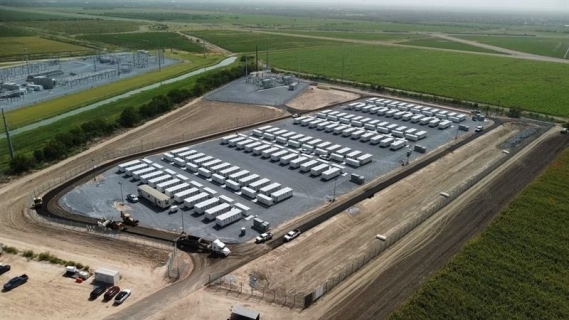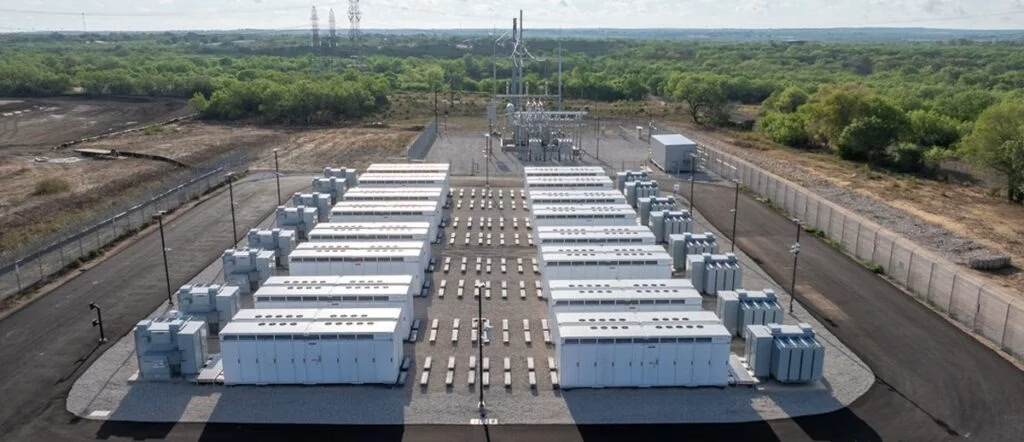Eolian, L.P. has closed a $463 million financing package to advance construction of Padua 2 and Padua 3, two battery energy storage systems in Bexar County, Texas. This funding completes the final phases of the Padua Complex, which will be among Texas’ largest battery developments.
When fully operational in spring 2026, the overall complex will provide 400 MW / 1.8 GWh of fast-ramping energy capacity at a key substation near retiring coal and aging gas generation units.
Project Background & Strategic Role
Padua 1, already in service, delivers 50 MW with about 2 hours of storage. Padua 2 and 3 (150 MW and 200 MW respectively) each will offer about 5 hours of discharge capacity. All phases use Tesla-supplied battery systems.
The site lies adjacent to a substation near retiring J.K. Spruce coal units and the V.H. Braunig gas plant. It plays a crucial role in supporting south-to-north transmission flows in Texas’ grid. Texas grid operator ERCOT has flagged the region as a transmission “pinch point.” The Padua Complex is designed to make full use of existing lines until upgrades complete around 2030.
This development reflects broader trends in North America’s transition toward cleaner energy and grid resilience, similar to NextStar Energy’s completion of a $5 billion EV battery plant. Both projects strengthen the continent’s energy supply chain and support long-term sustainability goals through large-scale, forward-looking infrastructure investments.
Project Factsheet: Padua Battery Storage Complex (Texas)
Project Name: Padua Battery Storage Complex (Phases 1, 2 & 3)
Location: Bexar County, Texas, USA
Developer / Operator: Eolian, L.P.
Total Installed Capacity (final): 400 MW
Total Energy Storage: 1.8 GWh
Phases / Breakdown: Padua 1: 50 MW (approx. 2h); Padua 2: 150 MW (approx. 5h); Padua 3: 200 MW ( approx. 5h)
Financing Closed: $463 million for phases 2 & 3
Technology / Supplier: Tesla battery systems
Target Completion: Spring 2026
Strategic Substation Proximity: Near J.K. Spruce (coal) and V.H. Braunig (gas) units
Key Role in Grid: Alleviate transmission constraints; provide fast ramping & flexibility
Market / Policy Enabler: Texas rules enabling long-duration storage; grid need for reliability
Challenges: Transmission limits, permitting, phasing, market monetization
Financial & Operational Details
Natixis Corporate & Investment Banking arranged the financing. Eolian will develop, build, and operate all phases using its internal asset optimization teams. Total private investment for the project (across phases) has now exceeded $700 million. Eolian’s CEO noted that fast, large-scale battery deployment helps stabilize the grid during peak demand and bridges the gap until other clean technologies scale.

Challenges, Benefits & Market Context
Challenges
- Integrating long-duration storage at scale within existing transmission limits.
- Timing construction and operations to match regulatory, permitting, and grid constraints.
- Ensuring reliability across all phases, especially given evolving demand.
Benefits
- Enhanced grid flexibility and resilience during stress periods.
- Deferral of costly transmission upgrades by optimizing existing corridors.
- Support for retiring fossil assets and smoother transition to cleaner power systems.
In the broader market, the Padua Complex underscores the trend toward 5-hour (or longer) battery systems as reliability products in competitive markets. Texas has recently passed rules encouraging such duration storage.
Status & Outlook
Construction is underway for Padua 2 and 3. The entire complex, when complete in spring 2026, will supply 400 MW / 1.8 GWh. Eolian aims to harness grid signals and market products to monetize flexibility, frequency response, and energy arbitrage services

